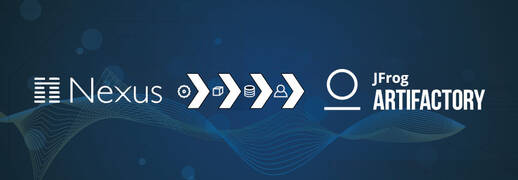What are Sonatype Nexus and Artifactory
Nexus – Nexus is a repository manager which allows the proxy, collect and manage the dependencies.
It makes it easy to distribute the software.
Nexus is best to organize, store and distribute software components.
It delivers safer, faster, and better software with an automated software supply chain.
The Sonatype Nexus is an open-source tool which having 527 GitHub stars and 237 GitHub forks.
The Nexus platforms are more than 80% accurate than Jfrog Artifactory. Nexus provides universal support and is suitable with popular tools like Eclipse, Hudson, Jenkins, Puppet, Chef, Docker Etc.
Nexus has vast format coverage and supports all important languages and ecosystems.
Nexus repository is a robust package registry to all docker images and Helm chart repositories.
Artifactory – Artifactory is a universal repository manager. It integrates with the ecosystem and manages binaries and provides consistency to CI/CD workflow.
Artifactory is a tool that collaborates codes and version control. It supports all types of available software packages, enabling automated continuous integration and delivery.
Artifactory discloses a vast REST API that offers access to its features in the development cycle. Through API it is possible to manage builds, repositories, and artifacts and can perform searches, apply configurations, perform maintenance tasks, and many more.
Artifactory Query Language (AQL) gives you unusual flexibility to search for artifacts. It provides the easiest way to prepare queries that state any number of search criteria, filters, sorting options, and output fields.
Artifactory manages, configure and monitor DevOps services in the organization through a single pane of glass.
Differences between Sonatype Nexus and Artifactory

Artifactory is a tool that can be classified in the ‘Code Collaboration & Version Control’ category, whereas Sonatype Nexus is grouped under ‘Java Build Tools’.
According to the StackShare community, Sonatype Nexus has a wider approval, being mentioned in 49 company stacks and 16 developers stacks in comparison to JFrog Artifactory, which is listed in 16 companies stacks and 11 developer stacks.
Artifactory provides multi-cloud as well as hybrid cloud solutions whereas Nexus only supports on-prem.
Artifactory offers all the rest of the API endpoints which is needed for development, QA/QC, CI/CD, distribution, and deployment processes which Nexus doesn’t.
Artifactory stores exhaustive build-information for all builds (software bill of materials, or SBOM), it hosts and provides artifactory Query Language (AQL), an easy, and highly flexible tool to search for artifacts based on this ampleness of meta-data. There is no other repository manager that provides such extensive use of meta-data even Nexus as well.
Artifactory supports all major cloud storage providers (AWS, GCS, Azure Blob storage) and filestore sharding as well. But unfortunately, Nexus doesn’t support all these.
Artifactory supports a variety of replication modes ( pulled replication through a remote proxy, Active push replication to a single target, Active simultaneous push replication to multiple targets, event-based pull replication ) to support the different multi-site topologies of your global DevOps processes. Nexus only support pull replication through remote proxy.
Artifactory uses Derby DB by default whereas, Nexus uses a file system to store artifacts and metadata.
Artifactory and Nexus both allow searching by keywords, classes within artifacts, and GAV ( Group, Artifact, and version ) but in Artifactory its GAVC where can also be searched by a classifier.
Artifactory has various policy options to handle bad and missing checksums whereas Nexus involves specific permissions to restrict a repository browsing as well as searching through the web browser.
Auditing is much easier by using Artifactory, which involves an access log for the security-related incident. Especially logins, artifacts downloads, and deployments. This log can be viewed from the Artifactory UI and can be downloaded. Nexus logs don’t incorporate such detailed information, at least not in a separate way.
Nexus on the other side involves a special feature of RSS feeds for special events, such as for downloaded and deployed artifacts, logins, system configuration changes, and checksum errors. Artifactory doesn’t support RSS feeds.
Artifactory has no built-in special mechanism for removing artifacts after certain parameters e.g:- Lat use, path, tag, etc. whereas Sonatype Nexus has a built-in mechanism to support clearing up repositories.
To get trained and certification in both the tools there is a platform that is one of the best institutes DevOpsSchool. It claims to have the best and skillful trainers who hold a good experience, friendly environment, and practical projects that can help you guys to boost your carrier. So in my recommendation, if you are looking for an institute then it’s best in my consideration. Check once, guys.
